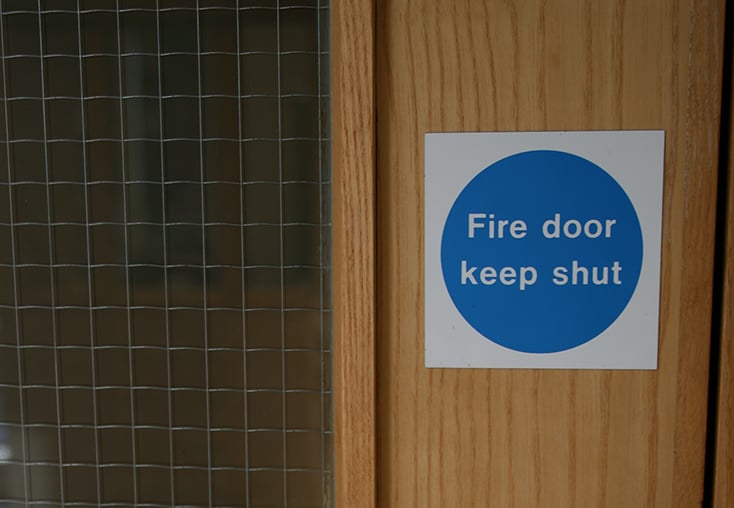Fire Doors
In short, fire doors save lives and property. They are part of a building’s passive fire protection system and are fundamental to most fire strategies for buildings.

What do fire doors do?
They provide critical protection within a building such as escape routes (stairs and corridors) and places of relative safety, and in separating different fire hazards in a building.
Specific guidance for fire doors relating to all buildings which contain two or more domestic premises and that contain common parts through which residents would need to evacuate in a fire is available on the www.gov.uk website:
Important information about fire doors
- Fire doors must work correctly
- They must be tested and third-party certificated to BS 476 – – Part 22 or BS EN 1634 Part 1
- They must be fitted with the correct and compatible components suited to the door leaf and its purpose
- Like any fire safety device, they should be installed and maintained by competent people
- A fire door’s performance should never be compromised
- Correct glazing and ironmongery must be used
- No altering or adapting the door leaf on site
- Always use the correct frames
- Always use intumescent seals
- Ensure good installation and maintenance
- Never prop open a fire door
DOs and DON’Ts for staying safe
Dos
- Specify and use third-party certificated fire doors and components
- Buy fire doors, frames and components from certificated companies
- Check the certificate matches the door
- Make sure you have the correct certification for the door’s intended use
- Install and maintain fire doors using competent personnel
- Make sure that ironmongery components are CE marked.
Don’t
- Fit a fire door as you would any other door – it’s an engineered safety device
- Cut vision panels and other holes on site
- Patch up a fire door
- Take risks by reducing the specification
- Disconnect a fire door closer
- Prop or wedge open a fire door
Did you know?
- Leaving fire doors wedged or propped open disregards the safety of others. Fire doors serve a vitally important purpose preventing the spread of fire to escape routes which allow people the time to evacuate the building safely.
- All fire doors should be fitted with intumescent seals – they expand between five and ten times their original size, sealing the gaps around the perimeter of the door and holding the door construction firmly in place.
- Some fire doors may also need smoke seals and/or acoustic seals.
- Essential ironmongery for fire doors must be CE marked even though fire doors themselves don’t need to be (at present).